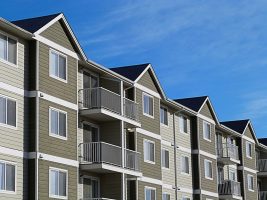As the National Association of Home Builders (NAHB) celebrates National Homeownership Month in June, builders are urging Congress to address America’s housing affordability challenges.
“Removing regulatory barriers that contribute to the increased costs of housing will pave the way to homeownership,” said National Association of Home Builders (NAHB) Chairman Greg Ugalde, a builder and developer from Torrington, Conn. “Home builders and the residential construction community are committed to working with Congress to ensure homeownership is within reach of hard working families.”
Rising costs from excessive regulation, a shortage of construction workers, tariffs on $10 billion worth of building materials, and housing finance concerns have detrimental effects on housing affordability. NAHB analysis shows that regulatory requirements alone account for 25 percent of the price of a single-family home, and 30 percent of the cost of a multifamily development.
Even with lower mortgage interest rates, housing affordability is relatively the same as it was a year ago. The NAHB/Wells Fargo Housing Opportunity Index found only 61% of new and existing homes were affordable to a typical household. The current homeownership rate (64.2 percent) remains below the 25-year average rate (66.3 percent), according to the Census Bureau’s Housing Vacancy Survey (HVS).
More than half (53 percent) of buyers actively searching for a home in the first quarter of 2019 have been looking for three months or longer, according to NAHB’s Housing Trends Report (HTR). Home buyers say high home prices are the principal barrier to homeownership. A majority (78 percent) of buyers estimated they could afford fewer than half of the homes for-sale in their markets finding a home. In the first quarter of 2019, prospective Millennial buyers are the likeliest cohort to expect house hunting to become easier in the months ahead (23 percent), followed by Gen X’ers (22 percent), Seniors (20 percent) and Boomers (18 percent), according to the HTR. About 20 percent of Millennials have plans to purchase a home in the next year, compared to only 15 percent of Gen X’ers, seven percent of Boomers, and three percent of Seniors.
Read More



